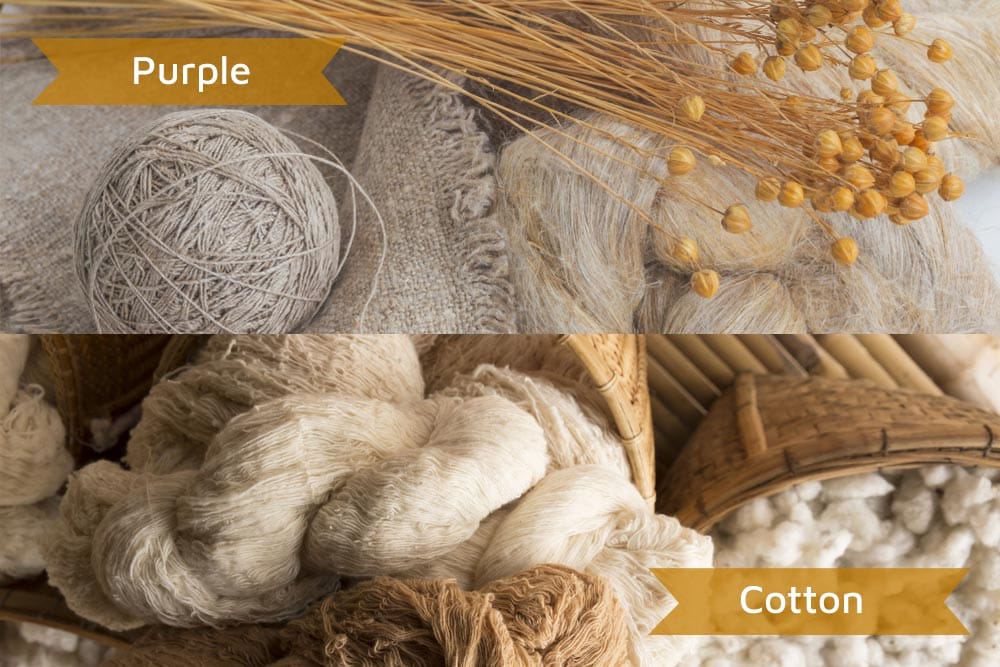
An average person sleeps eight hours a day.
Take a calculator and do the math. This means that you will sleep for about 229,961 hours in your lifetime. That is basically one-third of your life.
So, if we are going to spend that much of our precious time in our beds, we better be sleeping on quality mattresses with quality bedding, right?
For that reason, choosing the right sheets for yourself is never easy. You have to consider so many factors – the size of your bed, the pattern, design, brand, price, how it feels in your hands and so on.
However, the first and probably the most important aspect of picking the best sheets on the market is perhaps deciding which fabric do you want them to be made of.
Today, I am going to help you figure out which one suits your needs better – cotton or linen. You are probably familiar with both, but how well do you know their advantages and disadvantages for bedding purposes?
Keep reading, and everything will become entirely clear.
What is Cotton?
Different Types of Cotton
What is Linen?
What’s the Difference between Organic vs. Non-organic Linen Sheets?
Where should my linen come from?
Cotton vs. Linen – Detailed comparison
Linen vs. Cotton Thread Count
Conclusion
What is Cotton?
Good old cotton has been found in different textiles as early as 6000 BC. If you think that is impressive, you should know that today, cotton is used in the manufacture of around 75% of all of our clothes. Most of your underwear, socks, shirts, pants, sheets, towels and rugs contain it.
If it has been so widely present, for so many centuries – it must have tons of good qualities.
This fabric is highly ranked as a textile in terms of versatility, affordability, and accessibility. If you ask me, there is rarely something so comfortable as cotton, but, where does it come from?
Cotton is a natural, soft fiber that comes from the shrubby plant, from the Mallow family which grows in tropical and subtropical regions of the world. It is almost pure cellulose.
As a fabric, cotton is lightweight, soft, breathable, and easy to wash, which makes it an excellent choice for both bedding and sleepwear.
Different Types of Cotton
Did you know that there are different types of cotton? Once you start searching for perfect sheets, you become painfully aware of this fact. The different types of cotton refer to different fiber length and quality.
These are the main types you will come across:
-
Egyptian Cotton
This cotton has the longest fiber length, and therefore it is considered to be the best quality cotton in the world. It is grown in Egypt, of course, and it is super soft.
If you are aiming for a luxurious feel, but you still want your sheets to be durable and robust, Egyptian cotton is a good choice. However, you should be aware that sheets made from 100% Egyptian Cotton can be quite expensive.
-
Pima Cotton
This cotton is basically a second runner. It has second longest fiber, and its quality is undeniably fantastic.
Just as Egyptian cotton, Pima is renowned for its softness but it is grown in Americas. You could say that it is almost identical to Egyptian cotton, except that it is grown on a different continent.
-
Upland Cotton
When you see the label “100% cotton”, you are probably dealing with Upland cotton. This type is much more affordable than the previous two, but, as you can guess, it has shorter fibers.
At the same time, the fabric is still soft, but its quality may vary. You can end up with threads that are weaker and poke out of the weave.
What is Linen?
Linen is a natural fiber, which makes it extremely popular today. It is derived from the stalk of the flax plant.
Just like cotton, it has a long history. In fact, linen dates back over 8000 years, and it was the first fiber ever used to weave fabric. Mediterranean civilizations were the pioneers of linen production. However, it was quickly adopted all over Europe, and it reached the peak of its popularity during the medieval times. Today, the highest quality linen still comes from the European countries.
Before it comes to you, in the form of extremely durable, high-quality sheet, the flax plants are harvested for the longest possible fibers and dried, seeds are removed, and the fibers are removed from the stalk as well. After all, this is done, the final step is knitting the fibers into the linen textile.
As you can see, linen goes a long way before it becomes the part of your bedding. However, there are still some details you need to know.
Does it matter if the material is organic or non-organic? Also, is it important where does it come from?
What’s the Difference between Organic vs. Non-organic Linen Sheets?
If you insist on having organic sheets, this is possible if you choose linen. The whole process for making flax into linen is usually eco-friendly.
However, there is no significant difference between organic and non-organic linen, when it comes to its quality.
Fortunately, the flax plant is quite resistant, and it can grow without the help any pesticides and irrigation. This means you can purchase utterly organic linen sheets, but you should be aware of one thing.
If you decide to do so, you won’t be able to pick colors. Organic linen comes only in the natural color or cream/ivory because the dying process automatically makes it non-organic.
I don’t really mind having non-organic sheets, especially because I love my bedroom to be colorful. However, I wanted you to know, that you have this option in your hands too.
Where should my linen come from?
When it comes to cotton, we believe that the best one comes from Egypt. What about linen?
People often believe that the country it is woven in can make a significant difference regarding its quality. Belgian or French linen might sound fancy, and these countries do have the optimal climate for the flax plant to grow, but it isn’t any different than the one manufactured in the rest of Europe.
It is no surprise that European linen is considered to be the best as they have the longest tradition of flax cultivation. However, you should know that the flax plant can be grown all over the world and it can be used for various purposes such as the production of oil, paper, seeds, and rope.
The quality of its crops depends more on the growing season than the region it is cultivated in.
So, don’t spend hundreds of dollars more on linen sheets made in Normandy or Belgium, when you can get just as good product from UK or Canada, for example.
Cotton vs. Linen – Detailed comparison
Now that you know what are both cotton and linen made of, where do they come from and what are the main types you can choose for your bedding, it is time to dive into the details.
I will address the crucial aspects of both textiles and declare the winner for each category.
In the end, I will try to make this choice as simple as possible for you, by picking the overall winner.
So, let’s start:
Pros
- It is soft.
- It is durable.
- It is breathable.
- It is easy to care for
Cons
- It doesn’t insulate very well
- It collects moisture
Pros
- It is very breathable.
- It is excellent for warm climates.
- It is soft.
- It is excellent for warm climates. It can be durable
- It is naturally hypoallergenic
Cons
- It wrinkles easily.
- It can be a bit expensive.
1Durability
When it comes to durability, you can’t make a mistake no matter which one you choose, linen or cotton. Both materials are well-known for their strength, and your new sheets won’t let you down. However, there are some slight differences.
As you know, cotton is tightly woven fabric, and this feature makes it sturdy and durable. At the same time, this textile has a certain elasticity which makes it malleable and flexible. If you purchase cotton sheets or bedding and care for them correctly, they will last around 3-5 years, which is admirable.
On the other hand, linen is considered to be the world’s strongest natural fiber. Experts say that it’s about 30% stronger than cotton.
Linen sheets and bedding can last up to 20-30 years when cared for correctly. So, if you want to get the set of sheets that will stay in your family for generations, linen should be your choice.
The clear winner of this category is – Linen.
2Breathability
Both cotton and linen are natural fibers, which means breathability shouldn’t be an issue.
Cotton is absorbent and extremely breathable. It allows air to move freely through the fabric. If you purchase high-quality cotton bedding, you’ll have a feeling that your sleeping with a built-in air-conditioner in your bed. At the same time, it has excellent insulation properties, and it can absorb up to 25% of its weight in moisture, which is impressive.
However, linen is slightly more breathable due to the length and width of its fibers. Flax fibers are naturally hollow, which allows both air and moisture to circulate. For that reason, linen is considered to be a natural insulator.
If you are dealing with allergies or respiratory problems, you will be glad to know that linen is naturally hypoallergenic.
So, the winner of this category is Linen, once again.
3Comfort
When I decided to invest money in a high-quality set of sheets, comfort was one of my top requirements. Bedding can be great, but if I don’t feel good sleeping in it, if I don’t wish to stay in bed whole day, it is the waste of money.
If you feel the same, cotton will probably win you over in a minute. It is smooth to the touch and doesn’t have any texture or natural pattern. As soon as you hop in the bed, you will fall in love with the gentle, crisp feeling it offers. At the same time, cotton blankets and bedding will keep you cozy and warm during cold nights.
On the other hand, linen has a textured look and feel. It is a bit more granular, and it can look patterned in some cases. It is slightly thicker than cotton, and due to its superior breathability, it is cool to the touch. During the colder months, you’ll have to layer linen blankets if you want to stay warm.
However, your brand-new linen bedding will serve you great in the summer. As years go by, linen will become softer and offer you a more pleasant touch, but you will have to wait approximately three years before it becomes about as comfortable as cotton.
The winner in this category is – Cotton.
3Price
To be honest, the average price of linen and cotton sheets and beddings is not so easy to explain. It depends on many factors – a type of cotton or linen you are purchasing, the notorious thread count, the size of your bed, design, brand, special features and so on.
However, the general rule is this:
Even though Egyptian and Pima cotton can be super pricey, especially if you decide to go with the more luxurious models, on average, cotton textiles still tend to be lower priced than linen.
Such price difference is caused by the complex and intensive process of linen production and its growing popularity at the moment.
The winner of this category is – Cotton.
Linen vs. Cotton Thread Count
As I started my search for the perfect set of sheets, I realized that the words “thread count” appear wherever I look. I fell into that trap, and just like every other human being, I started believing that if something is mentioned so often, it must be important.
Well, if you are deciding whether to buy linen or cotton bedding, I need to debunk this myth for you. Thread count is nothing else but the number of threads per square inch of fabric. Even though it is widely believed so, it is not the indicator of quality.
Many brands will try to sell you overpriced Egyptian or Pima cotton sheets with the thread count of 1000, claiming these are the best, softest, most luxurious sheets you can find. Don’t fall for that.
Look at this chart:
| Type of fabric | Twin Mattress |
| Egyptian Cotton | It varies from 120-1000. You should pick a sheet between 200-400. |
| Pima Cotton | You will usually find thread counts between 200-300. |
| Upland Cotton | Usually somewhere between 150-180. |
| Linen | Usually around 80-150. |
Ideal thread count is somewhere between 200 and 400. However, it depends on the type of fabric. As you can see, linen has significantly lower thread count than cotton, but it is still considered by many to be a far more superior.
So, don’t be blinded by the numbers. You can get truly luxurious sheets with lower thread count.
Look for other features instead.
Conclusion
Now you have all of the necessary information to pick out the perfect sheets and bedding for yourself. Linen vs. cotton dilemma shouldn’t seem so confusing at this point.
It sure isn’t to me. In my opinion, good, old, reliable cotton is the overall winner of this battle. Yes, linen seemed to be winning in the beginning, but cotton threw it off the throne in the last moment.
Both fabrics have been insanely popular for the past few years, as they are truly amazing, and most importantly for today’s market – natural. However, linen’s popularity is still growing as we speak. Such trend causes its price to rapidly rise as well.
I don’t like the idea of spending a fortune on bedding, and I do want to refresh my bedroom with the new set of sheets every few years, which means cotton is the ideal choice for me.
However, my general advice is following – if you are living in a colder climate, stick to cotton. On the other hand, if you come from tropical and subtropical regions of our beautiful planet, linen is the way to go. This rule will provide you with maximum comfort and potentially save you a lot of money.
If you have any additional questions or an opinion you’d like to share, feel free to leave me a comment. Did you sleep in both linen and cotton sheets? Do you think I’m making a mistake by picking cotton over linen? I’d love to hear your input.
Whichever you choose, linen or cotton, I wish you the sweetest dreams in your new sheets.









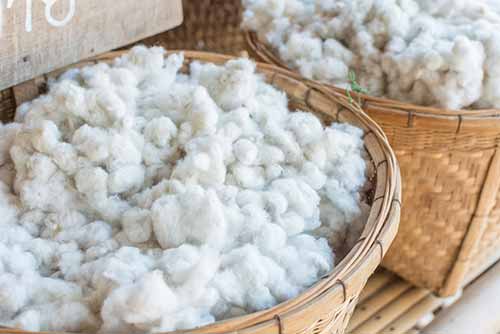
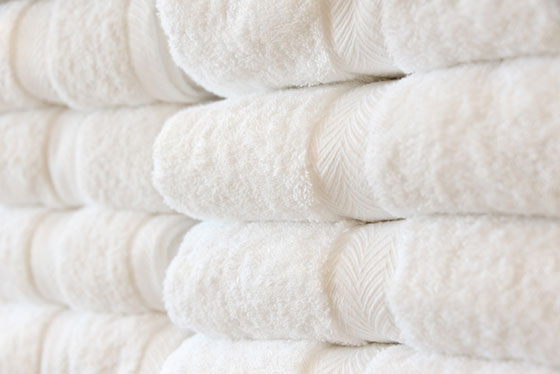
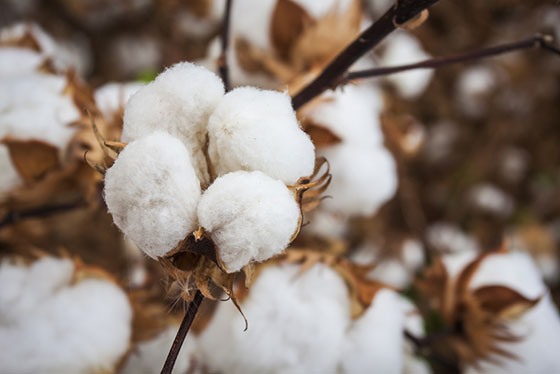
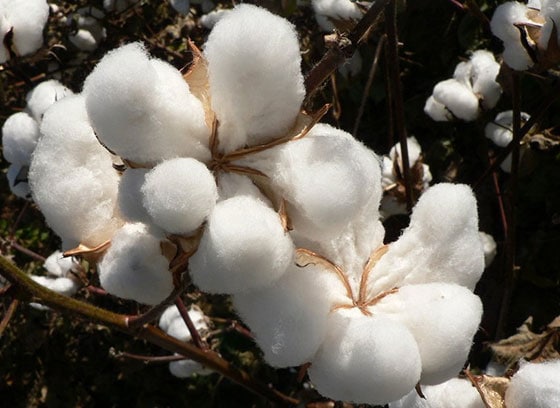
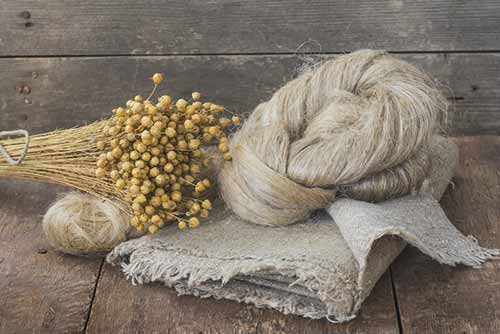
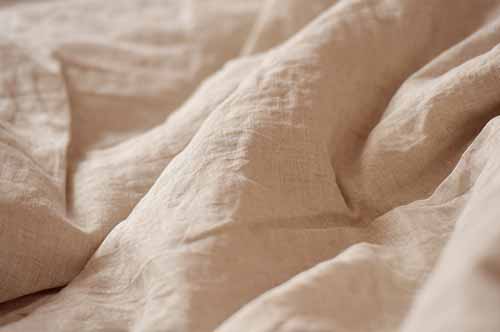
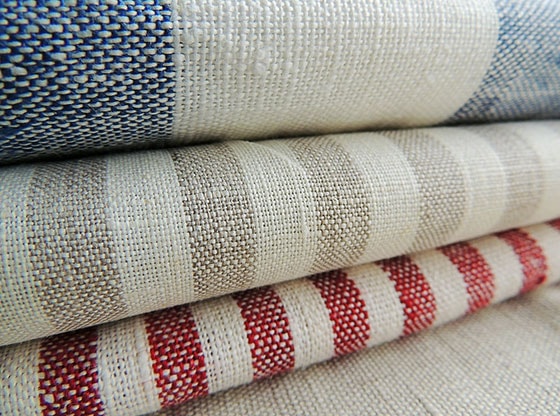

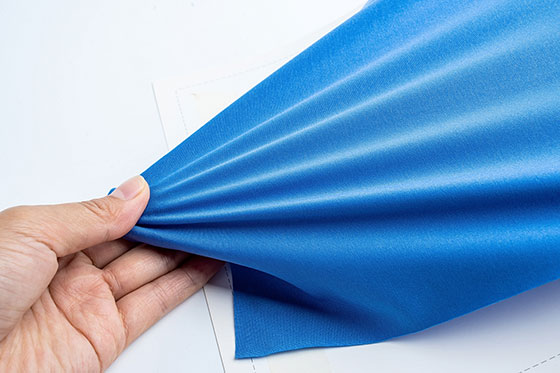
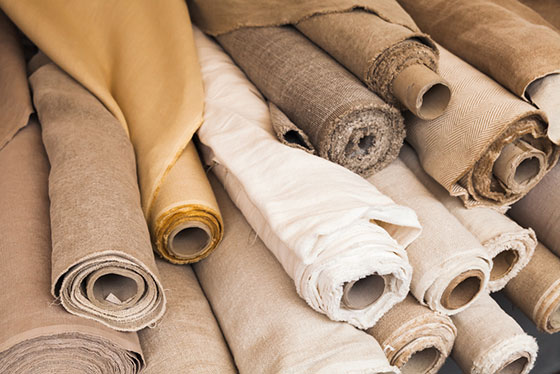


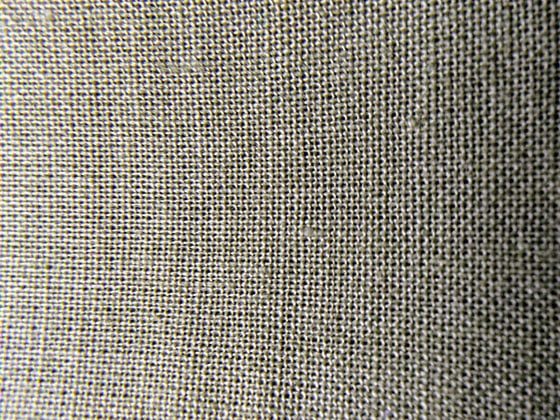









I am from Alabama we have the best cotton I love cotton sheets I don’t like a high thread-count I like a 200 thread count I vote for cotton all the way it don’t cost as much and it even better
Thank you for your article. It was very helpful! I have a question though. I was thinking about getting a linen duvet cover for my light weight down comforter and was wondering if it would affect r warmth? We love in Vermont where there’s long winters and very cold. I would use cotton sheets and also have a cotton blanket under the comforter. I love the natural look of linen so I’m drawn based on that aspect. Thank you!
Hello and thank you for commenting!
Linen is an excellent choice if insulation is what you’re after – due to the nature of its fibers, I’m confident that it will do an outstanding job at keeping you cool during the summer, and providing some much-needed warmth during those long, cold winters in Vermont. It wicks away moisture and is much more breathable than other similar fabrics, such as cotton, so overheating shouldn’t be an issue, either.
And I agree on the natural look part – it adds a relaxed, yet luxurious touch to any bedroom setting.
I hope this clears things up a bit for you, and let me know if I can be of any more help here!